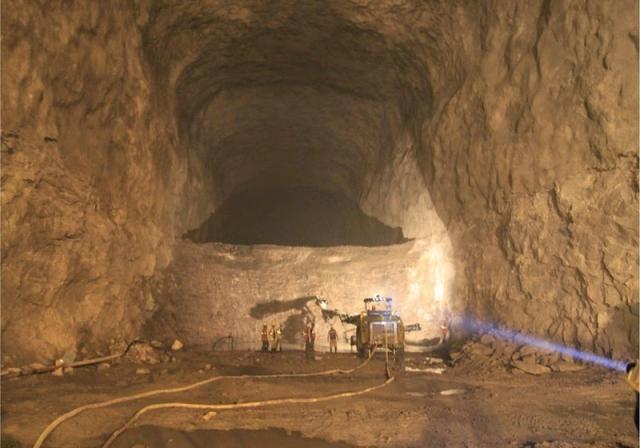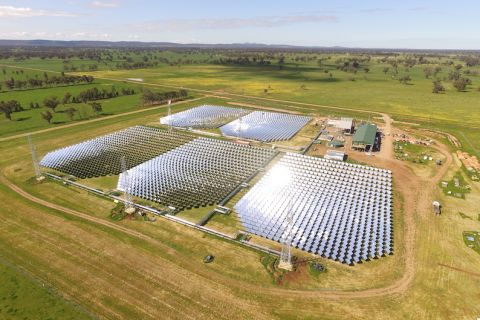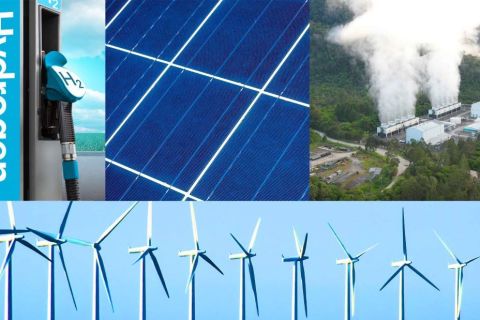
India plans to construct underground storage at Padur-II, Chandikhol, Bikaner and Rajkot. (Source: India Strategic Petroleum Reserve Ltd.)
India is augmenting its strategic oil reserve capacity to over 50 million tons amid the country’s increasing dependence on crude oil imports.
State-run Indian Strategic Petroleum Reserves Ltd. (ISPRL) has finalized a plan to build four underground oil reserves with a total capacity 12.75 million tons on the Public-Private Partnership (PPP) model over the next five years.
The plan involves constructing underground storage at Padur-II (2.5 million-ton rock cavern), Chandikhol (4 million-ton rock cavern), Bikaner (3.75 million-ton salt cavern) and Rajkot (2.5 million-ton concrete tank) along with dedicated single point mooring (SPM) units on the nearby coast.
“The Cabinet has accorded in principle approval to the development of Padur-II and Chandikhol strategic oil reserve projects with a capacity of 2.5 million tons and 4 million tons respectively on PPP model,” said the country’s petroleum ministry Dharmendra Pradhan, adding the remaining two will be taken up in the next phase.
Engineering India Ltd. has prepared detailed project reports for the four storage projects. The projects will increase the country’s underground oil storage capacity to 18.08 million tons from the current level of 5.33 million tons that comes from three reserves at Visakhapatnam, Padur-I and Mangalore.
The underground caverns and the existing 32 million-ton storage tanks at oil refineries will create a total storage capacity of 50 million tons, which is equivalent to about 90 days of the country’s net crude oil imports, Pradhan added.
The petroleum ministry has asked ISPRL to launch international competitive bidding for the development of Padur and Chandikhole caverns later this year.
PPP Model
The Indian government has given in-principle approval to the development of the Padur-II and Chandikole caverns on the design, build, finance, operate and transfer model, which offers the prospective concessionaire tax concessions and right to sell a “significant part” of the crude oil stored as and when required. The Indian government will have the first refusal on sale of the remaining part of the inventory.
“The envisaged PPP model promises valuable incentives to an array of stakeholders looking to profit from this business alliance ranging from supply side assurance of downstream refiners; logistics and location advantage; availability of low cost underground storage facility as an economical storage alternative; reduced captive above ground storage with flexibility of multiple grade crude oil and multiple revenue streams; suitable land parcel and geological setting for creation of SPR [strategic petroleum reserve], promising opportunity for financing, to a foreseen certainty of cash flows due to sustained Oil & Gas demand market,” the ministry said.
Huda claims companies such as Saudi Aramco and Abu Dhabi National Oil Corp. (ADNOC) and traders like Vitol Group, Trafigura and Glencore have indicated interest in partnering with India for setting up strategic crude oil reserves in the country.
They are increasingly looking at the Indian offer following an agreement to lease half of the existing 1.5 million-ton Mangalore cavern by ADNOC in November and submission of expression of interest by global majors, such as BP, Shell and Goldman Sachs, to hire the entire existing 2.5 million-ton capacity at Padur-I, which is near the Mangalore Port on the west coast. The lease agreement allows the UAE company to sell its entire Mangalore inventory to the Indian refiners.
Energy Security
During the road shows, the petroleum minister said development of new strategic oil storage is vital to provide energy security for a large crude importer like India. “The strategic oil reserves will help in avoiding supply-side disruptions as well as reducing price volatility of crude,” Pradhan said.
India is the third largest energy-consuming nation in the world, after China and the U.S., importing more than 80% crude oil to meet the demand in the country. Dependence on crude oil imports has been increasing over the years due to the stagnant domestic oil production and rising demand.
Import data prepared by the oil ministry’s Petroleum Planning and Analysis Cell informs that India’s oil import dependence increased to 83.7% in fiscal 2018-19 (ending March 31, 2019) from 82.9% in fiscal 2017-18. The country’s crude oil imports increased from 220 million tons in 2017-18 to 226 million tons in 2018-19. They are projected to reach 233 million tons for the current fiscal.
Development of crude oil storage facilities, industry analysts say, will not only secure supplies to the large Indian refining sector, which has a combined processing capacity of over 249 million tons per annum, but help make India a regional storage hub. The country is positioned along the trade route between oil-producing countries and oil-importing countries of the Asia-Pacific region.
Existing offshore oil terminals across India’s coastline and corresponding pipeline connectivity offer a unique advantage for receipt and dispatch of crude oil through very large crude carriers, which further reduces the freight costs.
Recommended Reading
Energy Transition in Motion (Week of Jan. 26, 2024)
2024-01-26 - Here is a look at some of this week’s renewable energy news, including NextEra Energy’s growing renewable energy backlog.
Could Concentrated Solar Power Be an Energy Storage Gamechanger?
2024-03-27 - Vast Energy CEO Craig Wood shares insight on concentrated solar power and its role in energy storage and green fuels.
Energy Transition in Motion (Week of March 1, 2024)
2024-03-01 - Here is a look at some of this week’s renewable energy news, including Chevron’s plans for a solar-to-hydrogen facility in California.
CERAWeek: NextEra CEO: Growing Power Demand Opportunity for Renewables
2024-03-19 - Natural gas still has a role to play, according to NextEra Energy CEO John Ketchum.
Energy Transition in Motion (Week of March 8, 2024)
2024-03-08 - Here is a look at some of this week’s renewable energy news, including a record-setting 2023 for U.S. solar.




